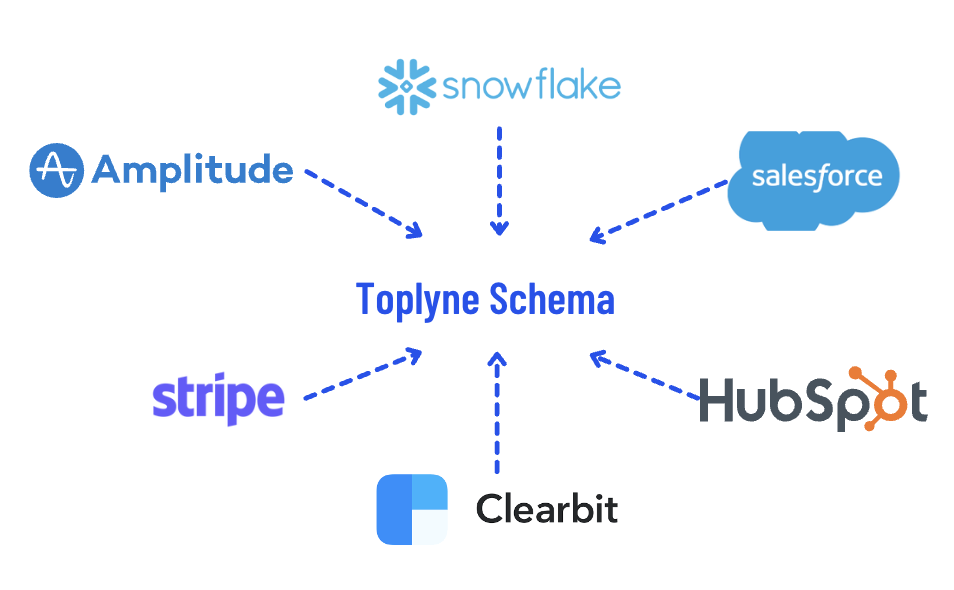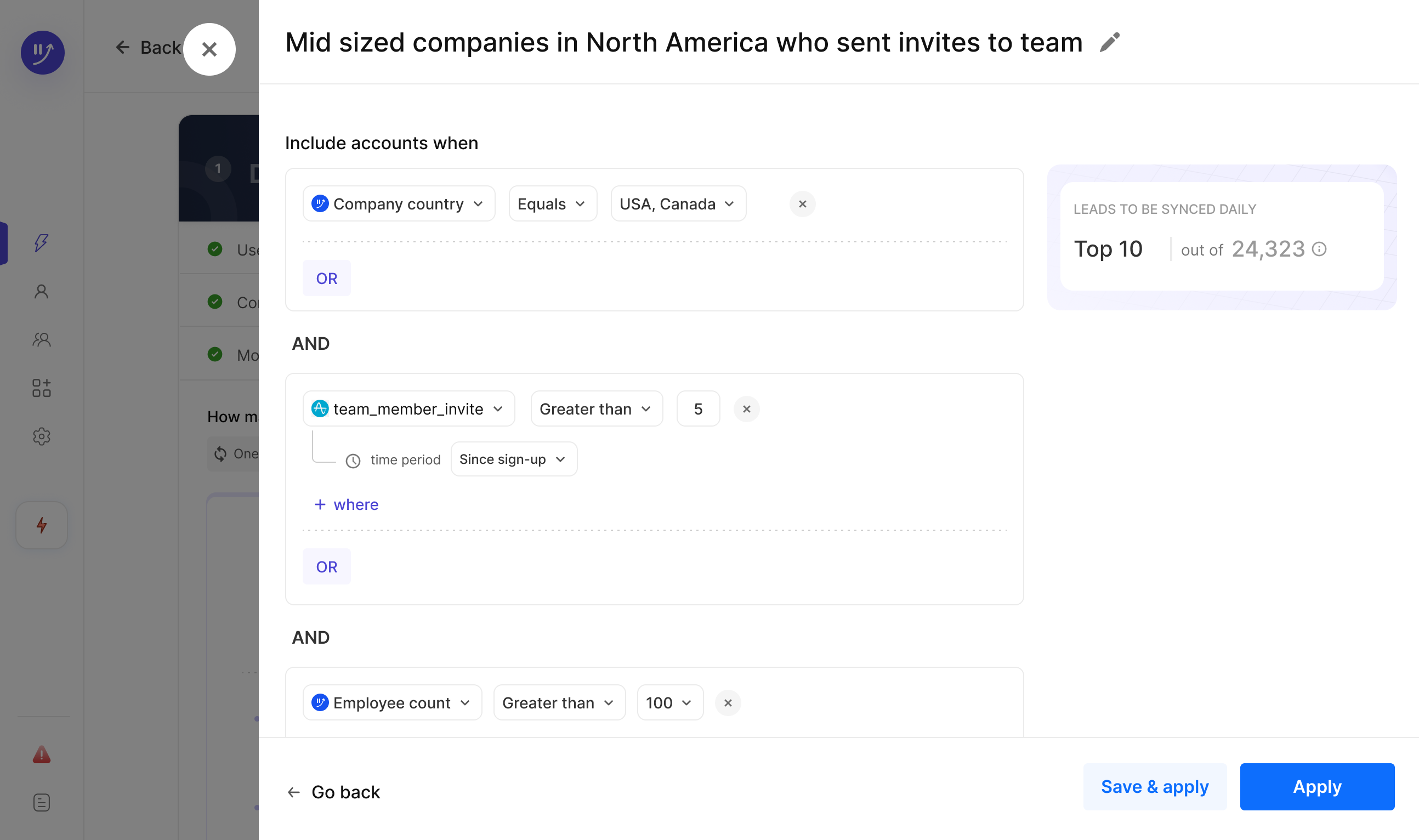How does it work?
The information layer
The information layer, also referred to as the data model, is our core intellectual property (IP). The effectiveness of AI models heavily relies on the quality of the data they are trained on.
To illustrate this, consider an AI model built solely on product usage data. Without access to demographic information, it might erroneously suggest that sales teams should focus primarily on students given their intensity of usage. On the other hand, a model built exclusively on demographic data might recommend that sales efforts should solely target the VP of Marketing who signed up for the product as a mere test, despite their lack of usage.
To create a successful AI model, it is essential to have unified access to all relevant customer data. However, organizations face the challenge of noisy data across different silos. This data could be stored in product analytics tools like Amplitude, backend databases such as Snowflake or Postgres, sales data in Salesforce, marketing data in Marketo, and support tickets on Zendesk. Furthermore, for a comprehensive understanding of customer profiles, companies often rely on multiple data providers like Zoominfo, Clearbit, People Data Labs, and 6sense for enrichment data. This situation poses significant challenges for data engineering and machine learning teams.

Combining the silos
Toplyne's information layer addresses these challenges by consolidating all disparate data sources into a single database. This is accomplished through a system of adapters that translate data from any application or database you choose to share with us, resulting in a unified data model that we call Toplyne schema. Once the Toplyne schema is established, the complexity of building AI models, creating user and account segments, building automations, querying through APIs and ultimately acting upon these insights becomes relatively trivial.
The intelligence layer
The intelligence layer, which consists of our AI models, is built upon the information layer. These AI models are specifically designed to make predictions and offer solutions for specific outcomes that are important to our customers. Here are a few indicative examples of such outcomes:
Expansion: If your account management team is looking to identify accounts that currently generate less than $1k per year but have the potential to exceed $10k per year in the next quarter, we can deploy a dedicated model for this purpose. Vercel utilizes our services for expansion-related tasks.
Churn prevention: For accounts with over 20 paid seats that may be at risk of churning or experiencing significant contraction during the next renewal cycle, we can develop models to proactively highlight these accounts to customer success. Generative AI companies like Murf and Pictory rely on us for churn prevention.
Cross-sell: If your sales team is interested in identifying cross-selling opportunities for the data back-up suite among accounts that have subscribed to DocSend, we can create a tailored model to support this effort. Cloudflare is among the companies that leverage our services for successful cross-selling initiatives.
The segmentation layer
Our segmentation layer offers a flexible system that allows you to align your business priorities with our intelligence layer. This ensures a seamless transition from your GTM (Go-To-Market) strategy to its implementation in production.
To illustrate, let's say you have used our intelligence layer to identify accounts that are most likely to expand from less than 5 seats to more than 10 seats. However, for the next month, you want your sales team to focus their efforts on accounts that meet specific criteria: they are venture-backed, have between 200-1000 employees, possess at least 2 active marketing contacts using the product, and have utilized DocSend. This approach is aimed at testing the hypothesis that sales cycles for these accounts would be shorter.

The action layer
The action layer in Toplyne lets you effectively utilize the data and insights generated by Toplyne. We provide three convenient methods for activating your data:
-
Push-based: You have the option to send data from Toplyne to over 40 GTM applications like Salesforce, Outreach, and Marketo at regular intervals. This ensures that your teams receive the specific data they need directly in their existing workbenches without the need for change management
-
Pull-based: You can request data on any account, team, or contact whenever you need it, though our API. This gives you on-demand access to the information you require. Eg: When a user visits the pricing/plans page, ask Toplyne their likelihood to expand & if the probability is higher than 10%, trigger an in product chat

Updated 11 months ago
